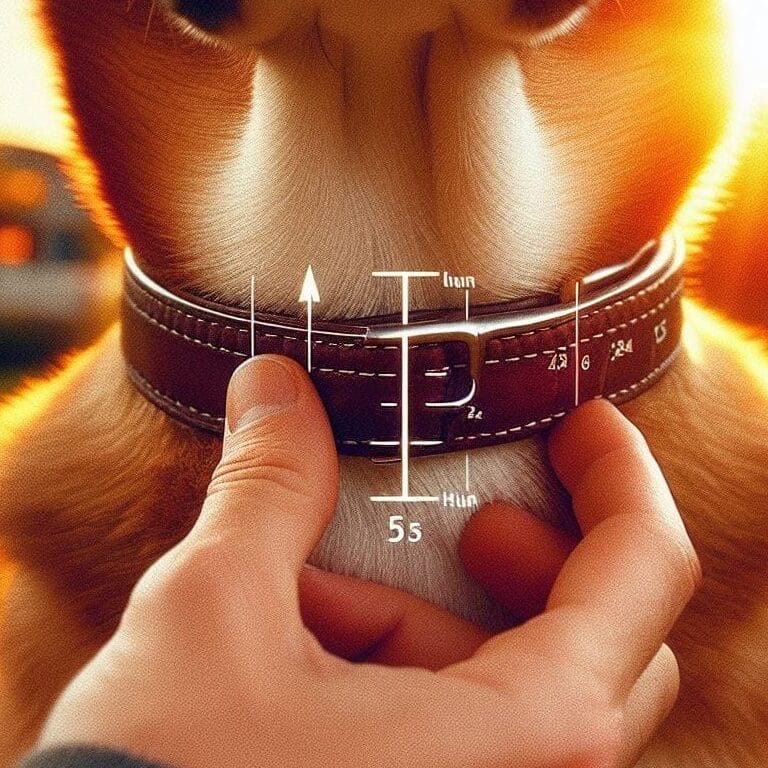What is the Best Collar for a Puppy?

Selecting the right collar for your puppy is essential as it will be their first experience wearing one, setting the foundation for future use. With numerous options available, from various materials to a wide range of prices, choosing the best one can be daunting. Here’s a comprehensive guide to help you choose the perfect collar for your puppy.
Importance of Choosing the Right Collar
A collar is more than simply a fashion accessory for your dog; it performs numerous important functions. A decent collar has a spot to attach identifying tags, which may be quite useful if your puppy gets missing. It also lets you attach a leash for walking and training. Therefore, choosing the correct collar is crucial for your puppy’s safety and well-being.
Think about the Collar Style
There are many styles of puppy collars, including rolled leather and fancy fabrics. Comfort should be your top priority. A flat collar is usually the best choice for most puppies because it is comfortable and widely available. However, certain breeds might benefit from specialized collars like martingale collars, which provide more control without choking.
Types of Puppy Collars

When it comes to choosing a collar for your puppy, there are several types to consider:
1. Flat Collars
Flat collars are the most common type of collar. They are simple, adjustable, and come in various materials like nylon, leather, and fabric. These collars are suitable for everyday use and are generally comfortable for most puppies.
2. Martingale Collars
Martingale collars are designed to tighten when your puppy pulls on the leash, preventing them from slipping out of the collar. These collars provide more control without choking, making them a good option for training purposes.
3. Harnesses
While not technically a collar, harnesses are a popular alternative. They distribute pressure evenly across your puppy’s chest and back, reducing the risk of injury. Harnesses are ideal for puppies that tend to pull on the leash or have respiratory issues.
4. Breakaway Collars
Breakaway collars are designed with a safety mechanism that allows the collar to release if it gets caught on something. This feature is particularly beneficial for puppies that are prone to exploring and getting into tight spaces.
Supervision Tip: When your puppy first starts wearing a collar, keep a close eye on them. Puppies can get into all sorts of trouble. A breakaway collar, which releases if caught on something, is a good option for unsupervised times. However, these collars are not suitable for walking.
Factors to Consider When Choosing right Collar for your puppy
Selecting the best collar for your puppy involves considering several factors:
1. Size and Fit
The collar should fit snugly but not too tight. You should be able to fit two fingers between the collar and your puppy’s neck. An improperly fitted collar can cause discomfort or injury.That<why the colllar should be properly fit.
2. Material
Choose a collar made from durable and comfortable material. Nylon is a popular choice due to its durability and ease of cleaning. Leather collars are also durable and tend to be more comfortable over time, though they require more maintenance.If you want to make collar at home by yourself ,here is the complete guide.Click here
3. Safety Features
Look for collars with reflective materials or LED lights if you often walk your puppy in low-light conditions. Safety features can make your puppy more visible to drivers and other pedestrians.
4. Comfort
Your puppy will be wearing their collar for extended periods, so it’s essential to choose one that is comfortable. Padded collars can help prevent irritation and chafing.
How to Measure Your Puppy for a Collar
To ensure a proper fit, measure your puppy’s neck using a flexible measuring tape. Wrap the tape around the base of the neck, allowing enough room to fit two fingers between the tape and the neck. This measurement will help you choose the correct collar size, ensuring comfort and security.
Train Your Dog to Love Its Collar
Most puppies won’t immediately enjoy wearing a collar. Here’s a simple training method to help your puppy get used to wearing one:
- Introduce the Collar: Place the collar in front of your puppy. Reward any sniffing or interest with a treat.
- Get Comfortable: Once your puppy is comfortable around the collar, place it on their neck without fastening it. Let them get used to the sensation and reward them for leaving it on.
- Fasten the Collar: Once your puppy is used to the collar, fasten it properly and continue to reward them for wearing it.
Training Tip: Be patient and take it slow. Some puppies may take longer to adjust than others. Follow these steps gradually to ensure your puppy becomes comfortable with its collar. Training your puppy or dog with E-collar is also a great option.
Additional Tips
- • Begin with an Affordable Collar While you might want to keep your puppy’s first collar as a memento, starting with a less expensive option can be practical. Once your puppy is comfortable, you can invest in a higher-quality collar.
- Upgrade as Needed: Once your puppy grows accustomed to a certain type of collar, it’s easy to upgrade to the same brand in a larger size.
By following these guidelines, you can ensure that your puppy’s first experience with a collar is positive, laying the groundwork for future training and comfort.
Conclusion
Choosing the proper collar for your puppy is an important choice that will affect their safety, comfort, and training. Size, material, safety features, and comfort are all aspects to consider when choosing a collar for your dog. Remember to accurately measure your puppy and allow for an adjustment period to facilitate a seamless transition.
Keep supporting us.


